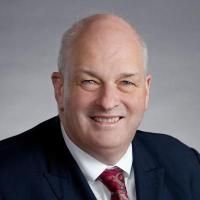Cost-effectiveness Improves for Operative vs Nonoperative Treatment of Adult Symptomatic Lumbar Scoliosis at Eight-Year Follow-up.
Date
2024-10
Journal Title
Journal ISSN
Volume Title
Repository Usage Stats
views
downloads
Citation Stats
Attention Stats
Abstract
Study design
Secondary data analysis of the NIH sponsored study on Adult Symptomatic Lumbar Scoliosis (ASLS).Objectives
The purpose of this study is to perform a cost-effectiveness analysis comparing operative versus non-operative care for ASLS eight years after enrollment.Summary of background data
A prior cost-effectiveness analysis of the current cohort comparing operative to non-operative care at five years after enrollment showed and ICER of $44,033 in the As-Treated analysis and a ICER of $27,480 in the Intent-to-treat analysis.Methods
Data was collected every three months for the first two years, then every six months for the remainder of the study. Data included use of non-operative modalities, medications and employment status. Costs for index and revision surgeries and non-operative modalities were determined using Medicare Allowable rates. Medication costs were determined using the RedBook and indirect costs were calculated based on reported employment status and income. Quality Adjusted Life Years (QALY) was determined using the SF6D.Results
There were 101 cases in the Operative (Op) and 103 in the Non-operative (Non-Op) group with complete eight year data. Thirty-eight patients (37%) in the Non-Op group had surgery from 3 to 72 months after enrollment. An As-Treated analysis including only cases who never had surgery (N=65) or cases with complete eight-year post-operative data (N=101) showed that operative treatment was favored with an ICER of $20,569 per QALY gained which is within Willingness-to-Pay (WTP) thresholds. An Intent-to-Treat analysis demonstrated greater QALY gains and lower cost in the Op group (ICER = $-13,911). However, Intent-to-Treat analysis is influenced by Non-Op patients who crossed over to operative treatment at variable times during follow-up.Conclusion
Operative treatment was more cost-effective than non-operative treatment for ASLS at eight-year follow-up. The ICER continued to improve as compared to the five-year values ($20,569 vs. $44,033).Type
Department
Description
Provenance
Subjects
Citation
Permalink
Published Version (Please cite this version)
Publication Info
Carreon, Leah Y, Steven D Glassman, Justin S Smith, Michael P Kelly, Elizabeth L Yanik, Christine R Baldus, Jon D Lurie, Charles Edwards, et al. (2024). Cost-effectiveness Improves for Operative vs Nonoperative Treatment of Adult Symptomatic Lumbar Scoliosis at Eight-Year Follow-up. Spine. 10.1097/brs.0000000000005186 Retrieved from https://hdl.handle.net/10161/31780.
This is constructed from limited available data and may be imprecise. To cite this article, please review & use the official citation provided by the journal.
Collections
Scholars@Duke

Christopher Ignatius Shaffrey
I have more than 25 years of experience treating patients of all ages with spinal disorders. I have had an interest in the management of spinal disorders since starting my medical education. I performed residencies in both orthopaedic surgery and neurosurgery to gain a comprehensive understanding of the entire range of spinal disorders. My goal has been to find innovative ways to manage the range of spinal conditions, straightforward to complex. I have a focus on managing patients with complex spinal disorders. My patient evaluation and management philosophy is to provide engaged, compassionate care that focuses on providing the simplest and least aggressive treatment option for a particular condition. In many cases, non-operative treatment options exist to improve a patient’s symptoms. I have been actively engaged in clinical research to find the best ways to manage spinal disorders in order to achieve better results with fewer complications.
Unless otherwise indicated, scholarly articles published by Duke faculty members are made available here with a CC-BY-NC (Creative Commons Attribution Non-Commercial) license, as enabled by the Duke Open Access Policy. If you wish to use the materials in ways not already permitted under CC-BY-NC, please consult the copyright owner. Other materials are made available here through the author’s grant of a non-exclusive license to make their work openly accessible.
